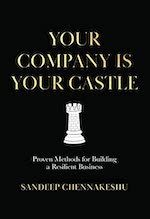Product managers in most companies use extensive sets of feature and performance benchmarks (metrics) to compare their products with competitors. These are all valuable, but what matters most is what customers care about and need because they are the ones who buy your products.
You can only get this feedback by talking to your customers. This does not mean you take everything a customer says literally and address it. The key is to distill customer feedback into what they like or dislike about your product — and more importantly, what they like about your competitor’s product.
2 Ways to Collect Customer Feedback and Improve Your Product
- Net promoter score (NPS): A net promoter score is a common metric used to compare products based on customer preference. Every customer gives a score between zero (low favorability) and 10 (high favorability). It’s best used for end products.
- Customer compliance: For intermediate products that are used to build end products, collect a list of compliance specifications from customers to drive your product development.
When you listen to your customer and create a consistently positive experience with your products that customers cannot find with competing products, you build brand equity — value, loyalty and trust.
Some outstanding examples of companies who have built strong brand equity are Starbucks and Tylenol. Starbucks coffee is designed to make a connection with its customers. This is evidenced by its loyalty program that has 26.4 million customers as of early 2022. There are even more dazzling statistics: About sixty million people visit the over thirty-one thousand global Starbucks cafes each week, which translates to more than three billion visits per year, with regulars (about 20 percent) visiting the café sixteen times per month. My calculation says each one of these frequent customers spends $500 per year on coffee.
How to Evaluate Customer Feedback With a Net Promoter Score
The consumer industry uses a metric called net promoter score (NPS). It’s a great metric to compare products based on customer preference.
The way this metric works is as follows. Every rater (consumer) gives the product a score between zero and 10.
- A score of zero through six means “I don’t like the product” (detractors).
- A score of seven or eight means “I don’t care” (passive position).
- A score of nine or ten means “I like the product” (promoters).
Promoters recommend the product and detractors don’t. If 100 people rate the product and you have 40 people who are promoters, 30 people who are passives, and 30 people who are detractors, then your score is calculated as follows: 40 percent promoters minus 30 percent detractors equals an NPS score of 10 percent. You ignore the passives.

As per Customer Guru’s 2020 data, the Samsung Galaxy phone has a score of 67 percent and the iPhone a score of 63 percent, which are very good scores. Some other companies with impressive scores are Costco (79 percent), Starbucks (77 percent), Sony (61 percent), and John Deere (54 percent). It’s possible to get negative scores if there are more detractors than promoters, which is an awful position.
NPS is a telling metric because the detractors also explain what they did not like about the product. If you correlate your product’s NPS against a competitor’s NPS, it will tell you what you need to fix. Otherwise, you are not in sync with your market and will lose share to that competitor.
In my experience, you do not have to be the best for every feature and attribute. You must be the best at what customers care about and use. For the remaining features and attributes, you need to be within the zone of competitiveness or good enough. This target should be the focus of the product management and engineering teams’ work.
NPS is useful for end products such as cellphones, TVs, cameras, laptops, wearables and enterprise application software.
How to Evaluate Customer Feedback Without a Net Promoter Score
However, net promoter scores may not be suitable for all products, for example, it is not the best gauge for intermediate products like automotive spares, semiconductor chips, software and other components that are used to build end products. Intermediate products are better measured by metrics such as:
- How compliant is the intermediate product to customer specifications? This can include cost, quality/reliability, performance, and other requirements that impact the end product’s NPS.
- How easily is the intermediate product integrated into the next-level solution?
- How does the intermediate product perform under different use-cases that the customer specifies?
- How well is the intermediate product supported by the company selling it?
At EMP, we sold chips and software to original-equipment manufacturers (OEMs) who built mobile phones. We sold intermediate products. In this business, a key metric for our products was compliance with wireless-operator specifications. Every operator, e.g. T-Mobile, AT&T and Vodafone Japan, issued a detailed specification of features and performance, almost 4,000-to-5,000 items, that our platform had to be compliant with. Without this compliance, our customers, the mobile phone OEMs, e.g., Samsung, LGE, Sony-Ericsson and Sharp, would not buy the platform because their mobile phones also had to comply with these specifications.
We invested to secure this compliance by having dedicated people work out of each major operator’s facility to collect requirements and constantly feed them to our engineering teams, who ensured that our products met those requirements. The high level of compliance made our product one of the platforms of choice.
NPS and compliance to wireless-operator specifications are two specific examples. The exact metric or metrics you end up using for competitiveness must be relevant to your business and your customers. Whatever you choose, be the best at what your customer values and wants.
***
This piece is an excerpt from Your Company Is Your Castle: Proven Methods for Building a Resilient Business, by Sandeep Chennakeshu. Copyright © 2022 by Sandeep Chennakeshu. Published by Fedd Books.





